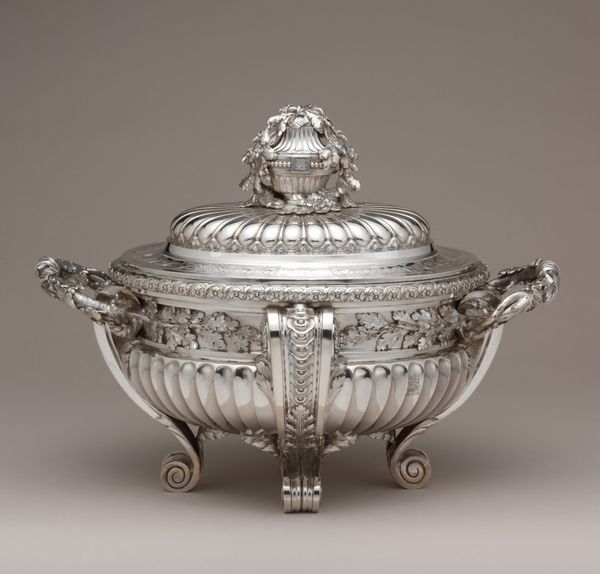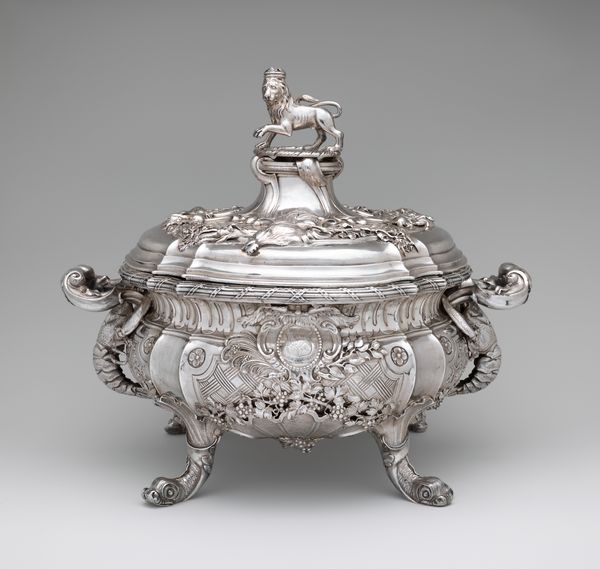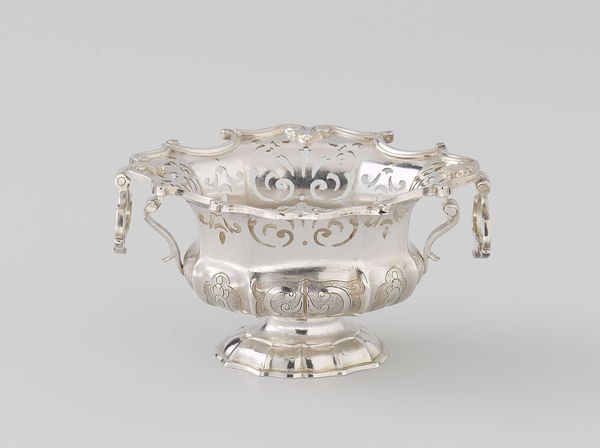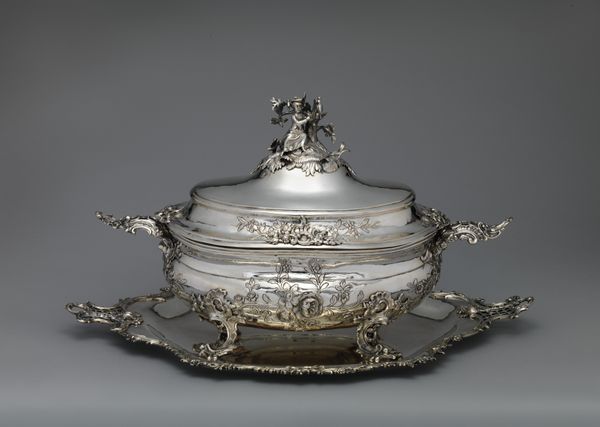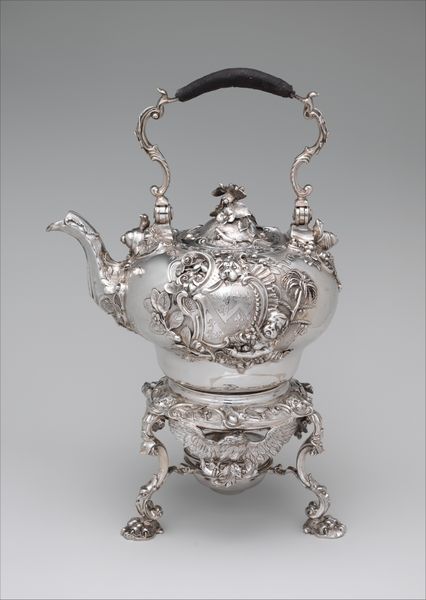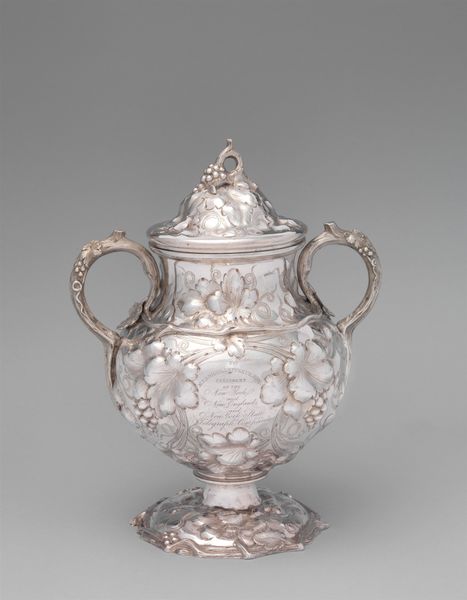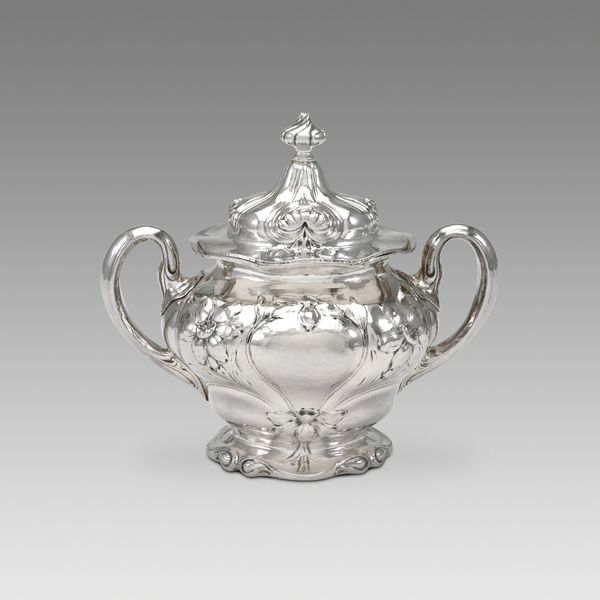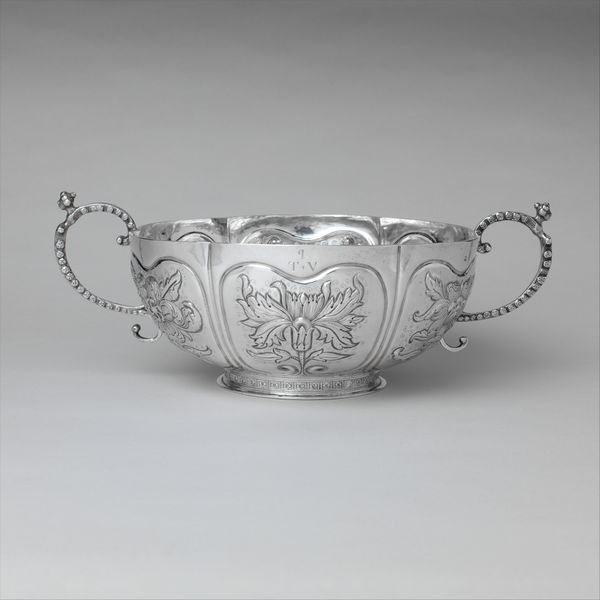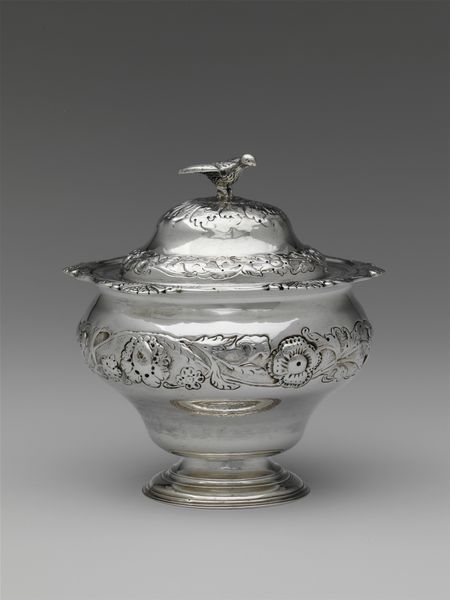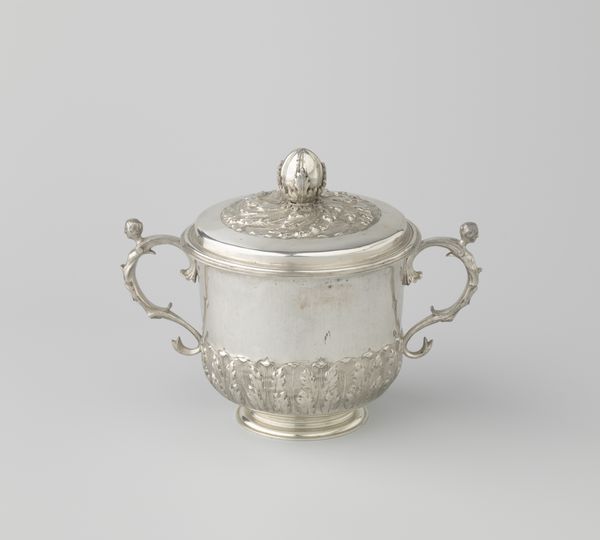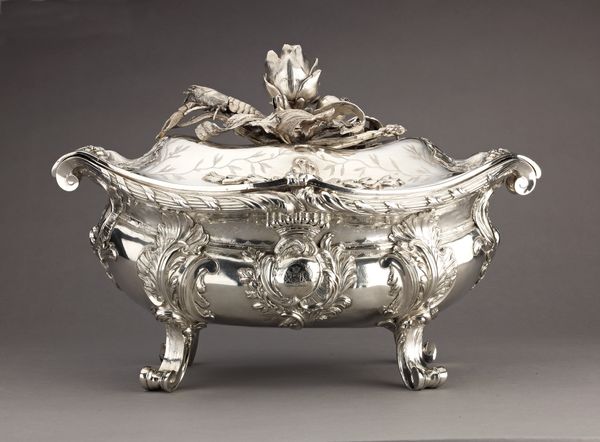
Dimensions: Overall: 39 1/2 × 65 × 36 5/8 in., 320 lb. (100.3 × 165.1 × 93 cm, 145.2 kg)
Copyright: Public Domain
Curator: Wow, this "Wine Cistern," crafted by Charles Frederich Kandler sometime between 1875 and 1885, has so much going on. It’s currently housed here at the Met. What leaps out at you first? Editor: I feel like I've stumbled into a fever dream of rococo excess! The gleam of the metal, the sheer abundance of figures...it feels decadent and almost intimidating, doesn’t it? A real showpiece, I suppose. Curator: Absolutely. In its time, a piece like this was a demonstration of power, of conspicuous consumption. Can you imagine the elaborate rituals surrounding the wine served from something like this? Think about how such displays solidified social hierarchies. Editor: It’s interesting to see this piece coming a century or so after the Baroque period and still showing some influence of this earlier aesthetic. What about the imagery used in its decoration? The men, animals… they can't be there at random, can they? Curator: Definitely not. It seems like it combines classical mythological figures, perhaps referencing Bacchus with those wine associations. These are entwined with naturalistic representations, animals for example. The overall affect is that of transformation. Also, considering it's meant for serving wine at gatherings, I think it encourages this exact kind of allegorical play. Editor: I like that, allegorical play. The squirrels seem out of place though. Still, there's a wildness, an almost uncontrolled energy. Does that ring true given its place in history, during an industrialising and socially complex era? Curator: Yes, precisely! The opulence acts, in part, as a form of escapism, an embrace of the ornate. Consider how, at the time, this could have been a stark contrast with the emerging industrial landscapes and increasingly regulated social norms. Editor: That contrast illuminates much of what I find jarring but also fascinating about the work. The beauty is definitely born from a complicated and, perhaps, hypocritical reality. Curator: Exactly. Seeing its presence here at the Met, it is easier to get some deeper understandings behind the beauty and flamboyance, even for today's audience. Editor: Indeed. I'll look at Baroque with renewed interest from now on!
Comments
No comments
Be the first to comment and join the conversation on the ultimate creative platform.
